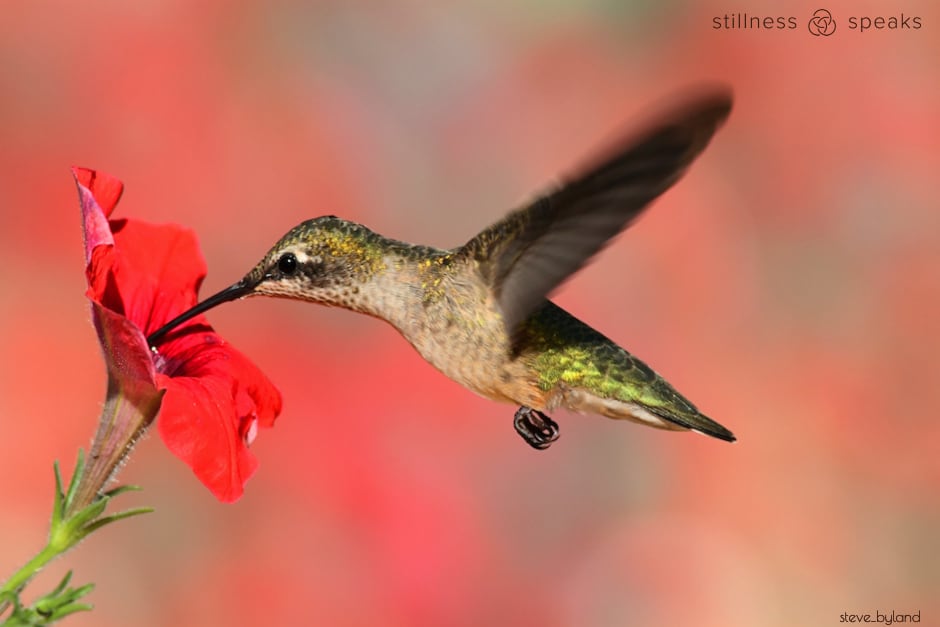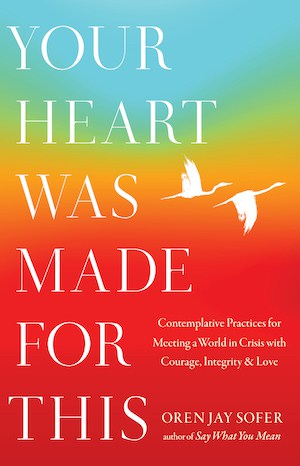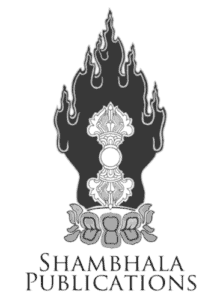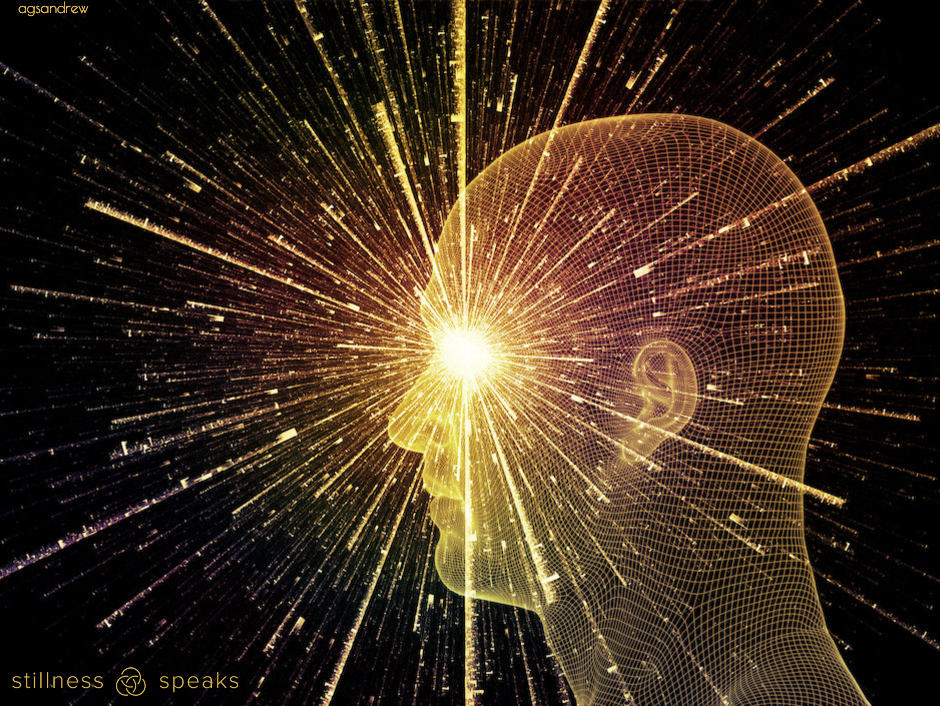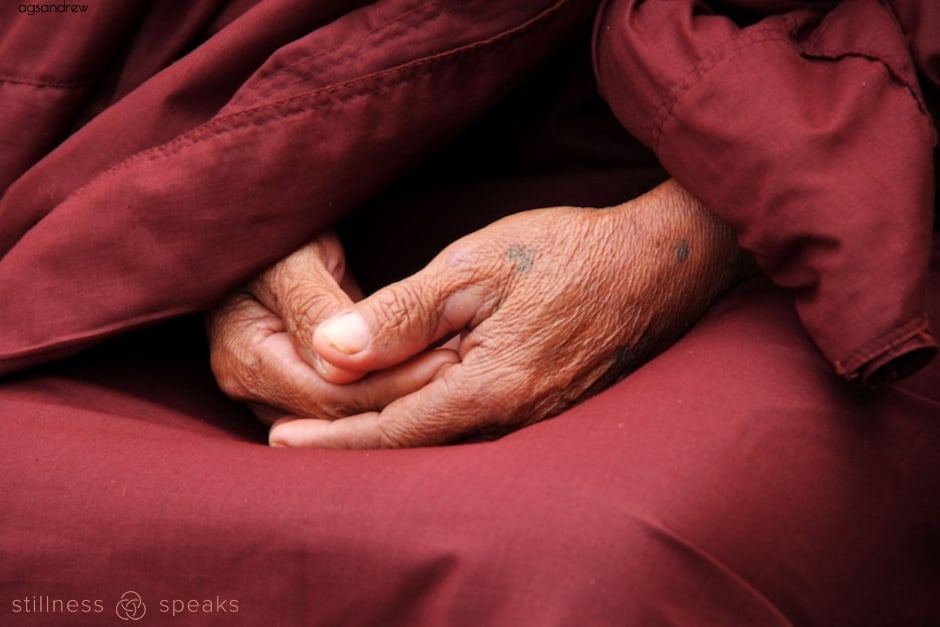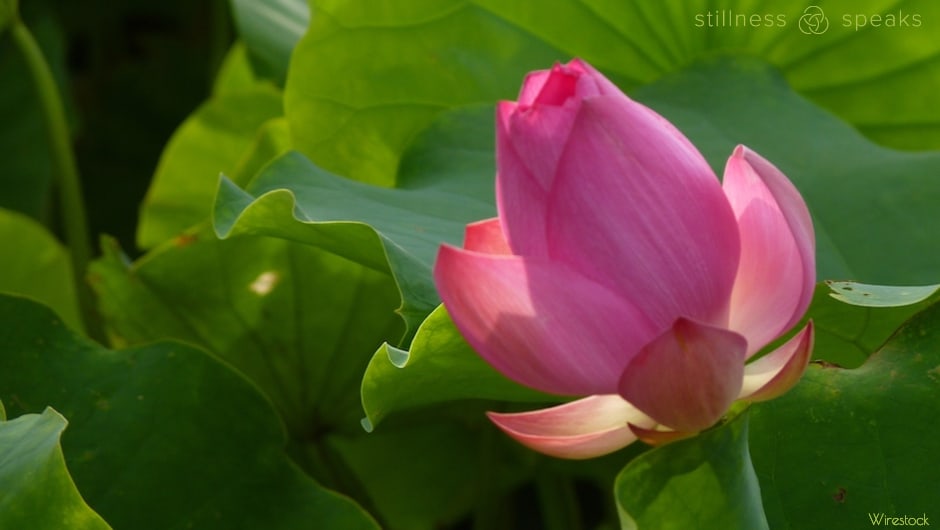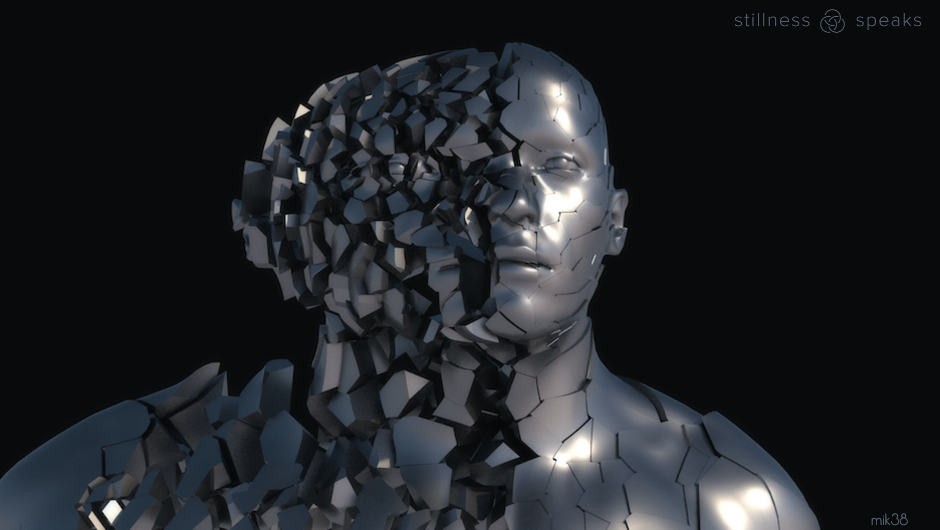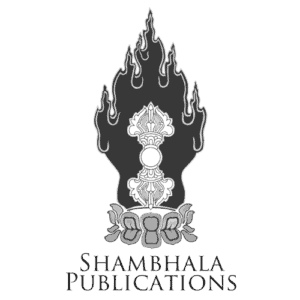“… Mindfulness is the only way to be free …” ~ Godwin Samararatne
Our original reasons for A Brief Pause … into Stillness (back on Sep 13, 2023) are still with us … but we resumed limited content publishing on Nov 22, 2023 … the regular weekly publishing will resume in January 2024 … will keep everyone updated on the website and via the newsletter … HAPPY HOLIDAYS !
This year has been dominated with deep challenges for us – in multiple regards – and one of the key “qualities” that helped us navigate – largely ( of course, “falling down” at times 🙂 ) – with ease and equanimity was/is mindfulness … so it seems most apropos to close the year with a post that reminds us of its profound gifts …
… as expressed by a fresh face to Stillness Speaks: Oren Jay Sofer, who has been steeped in the early Buddhist tradition since 1997 and whose “… teaching is known for its clarity, warmth, and its emphasis on embodiment …”
In his latest book, Your Heart Was Made for This: Contemplative Practices for Meeting a World in Crisis with Courage, Integrity, and Love, Oren delves into personal qualities like mindfulness, concentration, attention, curiosity, courage, kindness, empathy, resolve, rest, wonder (and more) and offers a practical roadmap to cultivate these thereby leading to a more fulfilling life that can more effectively meet challenges like anxiety, oppression, burnout and similar others.
A key uniqueness to Oren’s exploration in this book is his emphasis to go beyond the personal qualities cultivation and integrate it such that we can – as a community – deal with collective, societal (or fundamentally structural) issues like racism, climate crisis and similar others. As he says in the Introduction: ” … though the greater part of this book focuses on the internal cultivation of the qualities, we will also explore their external expression, collectively and on social movements, integrating them at all levels …” …
The book can be best summed up with two of the many testimonials:
“Your Heart Was Made for This brings the timeless wisdom of the Dharma to support us in the Great Turning. Whether you are new to contemplative practices or are a seasoned veteran, this book provides insights and concrete practices to help us come back to our whole selves. I can’t help but want my entire family to read this!” —Kazu Haga, author of Healing Resistance: A Radically Different Response to Harm
“Oren is a brilliant teacher. The teachings and practices in this book will lead to true inner fulfillment and a more compassionate and just society. A must-read for those seeking to cultivate authentic change from the inside out. Your Heart Was Made for This is exactly what our world needs at this moment in time.” —Kaira Jewel Lingo, author of We Were Made for These Times: Ten Lessons for Moving through Change, Loss and Disruption
The book, as mentioned above, covers many qualities all of which are essential … but we offer Mindfulness as part of this single post preview (based on a chapter excerpt) … because it is the ultimate seed to awakening and subsequent action – both personal and collective. In this chapter Oren explores the transformative power of mindfulness and its crucial role in freeing the mind from repetitive and unskillful thought patterns … underscoring that it is a means to connect intimately with present-moment experiences leading to a balanced and curious awareness. He shares personal experiences with mindfulness, highlighting its ability to unravel fear, slow down habitual thoughts, and bring about inner freedom. He also cautions against the commodification of mindfulness, noting that it alone cannot solve all issues and emphasizes the importance of addressing structural factors, like racism and poverty, for true well-being.
We also recommend Oren’s Introduction to the book – accessible via the Look Inside link on its Shambhala page.
This post is part of our ongoing Shambhala Publications series that offers substantive previews of selections from Shambhala Publications new and classic titles …
All italicized text here is adapted from Your Heart Was Made for This: Contemplative Practices for Meeting a World in Crisis with Courage, Integrity, and Love by Oren Jay Sofer, © 2023 by Oren Jay Sofer. Reprinted in arrangement with Shambhala Publications, Inc. Boulder, CO.
You can purchase the book at Shambhala Publications or Amazon.
Mindfulness
While living at the Buddhist meditation center in Massachusetts, I struggled with angst. Consumed by repetitive thoughts, I ruminated about how best to contribute in life. I still recall clearly the moment I finally recognized what I’d been feeling for months. I was meditating, mindfully feeling my breathing, when all of a sudden it became apparent: “Oh, I’m afraid.” In that moment of complete recognition, a weight was lifted. Instead of pushing the fear away or trying to think my way out of it in an endless cycle of oppressive thoughts, I faced it directly. Being mindful helped me slow down enough to see beyond the planning and worrying to how I truly felt. I stayed mindful of the fear, feeling it in my body, and it began to unravel instead of surreptitiously driving my thoughts all day.
Research on mindfulness has confirmed what meditators have known for centuries: the untrained, wandering mind tends to ruminate on things that make us unhappy. Without mindfulness, we move through the world on automatic pilot, a prisoner to habitual thoughts, feelings, and impulses. We may sink into unskillful patterns of boredom, apathy, agitation, self-loathing, or worry.
Godwin Samararatne, one of my first meditation teachers, was fond of a bold statement: “Mindfulness is the only way to be free.” Though there are many paths to inner freedom, each must include an aspect of mindfulness to be truly liberating. As we’ve explored, awareness is a prerequisite for transformation, revealing the forces that shape our minds and structure our society. When I first meditated, I felt like I was searching for something in the dark, without knowing what I was seeking. Mindfulness illuminates our inner life. The more it grows, the more aware we become in all aspects of life, creating a new, healthier habit of being wakeful moment to moment. Mindfulness works in tandem with other skillful qualities like concentration and equanimity, thereby opening the door to human flourishing and ultimately freeing our hearts and minds from reactivity and delusion.
When I began practicing mindfulness, I was so eager to make progress that I began silently narrating all of my daily activities with a tool called “mental noting”: “Now I’m getting dressed . . . I’m drinking water . . .” It took a few years to understand that mindfulness isn’t thinking about what’s happening but experiencing it. Being mindful means being fully embodied, feeling the texture of the clothing as it touches your skin, sensing the coolness of the water as you drink. To illustrate the difference, try this experiment. First, deliberately think the thought, “I move my hand through space.” Do it a couple of times. Got it? Now slowly and carefully raise one arm and move your hand through space, feeling all of the sensations. This direct experience is the difference between thinking about being mindful and actually being mindful.
Mindfulness is more than just paying attention. It is our innate capacity to be aware in a balanced and curious way. Mindfulness is a fresh awareness that connects intimately with whatever we experience, just as it is, without the distortions of bias, expectation, and control. We’re not judging what’s happening, waiting for something else, or trying to get something. Thus mindfulness has two parts: awareness and equanimity. One is clearly and directly aware of present-moment experience and not reacting to it or getting lost in it. To be mindful is to return to a very open way of being, sometimes referred to as “beginner’s mind.” The Zen master Suzuki Roshi talked about mindfulness as a soft readiness. It is receptive, alert, and engaged.
The Buddha taught mindfulness as a cornerstone of the path to inner freedom, instructing his disciples to establish mindfulness of the body as a vehicle for being aware throughout life. You can practice mindfulness in any posture—sitting, standing, walking, or lying down. To cultivate mindfulness, one typically begins by using an anchor such as the sensations of breathing in and out, the sensations of your hands resting in your lap, your backside touching the ground, or the sensations of walking. Again, if feeling sensations in the body is fraught or stressful, as can be the case when there is a history of trauma, try using hearing or seeing as an anchor. From the anchor, progressively expand the scope of mindfulness to include more and more of your experience.
The Buddha instructs us to cultivate a direct experience of the body before the mental constructs through which we tend to view the world. So rather than “my hand,” we learn to be aware of a changing constellation of sensations—warmth, coolness, pulsing, throbbing, tingling—that our mind recognizes and refers to conceptually as “hand.” When practicing mindfulness, one endeavors to sustain this direct, nonconceptual awareness continuously, from moment to moment.
Developing mindfulness gives us back our life. We awaken from sleepwalking through the world and rediscover the richness and vibrancy of the world. We are present for the heat, aroma, and flavor of a cup of tea or coffee. We relish the presence of a loved one or a spectacular day, fully connected to life. A few years after my parents’ divorce, I was helping my father in his basement. While on my hands and knees snapping floorboards together, I looked across the room at my dad, smiled lovingly, and said, “Hi, Ab” (short for Abba, “father” in Hebrew). It was the most ordinary of moments, and it was precious. Here we were, alive, healthy, working together. He looked back across the room and smiled, “Hi, Or.” Life is made of moments. If we are not present, they slip by as in a dream. I’m so grateful for the moments of presence I had with my father before he died, and mourn the countless ones I was too preoccupied to cherish.
Although I practice and teach mindfulness, I’m also troubled by how the term has been commodified by the multibillion-dollar wellness industry. The latest feel-good fad, it is touted in pop magazines and advertisements as a panacea, suggesting if we are just present enough, everything will be okay. “Depressed? Stressed? Relationship woes? Climate anxiety? In debt or unemployed? Just be more mindful!” Mindfulness is a powerful tool, but it’s not a replacement for wise action and can’t cure all of our ailments on its own. What’s more, popular mindfulness suggests that the sole source of our suffering is individual and internal, ignoring the vast influence of structural factors such as racism, sexism, and poverty on our well-being and our ability to access our inner resources.
Contrary to the hype, mindfulness doesn’t always make us feel good. Sometimes slowing down to connect with life can feel like stepping on the wrong end of a metal rake—you get hit in the face with all you’ve been avoiding, like the fear I felt in my twenties. The insight meditation teacher Michele McDonald uses the metaphor of a flower to highlight the natural pace and radical inclusivity of opening the heart with mindfulness. A flower opens slowly, when conditions are right, and may close again at night. We don’t try to force its petals open. So too, our hearts open in their own time, closing periodically for safety or rest. As a flower opens, it doesn’t just open to warm sunshine and gentle breezes. It opens to all of the elements—to the wind and the rain, the heat and the cold. As we practice mindfulness, we don’t just feel the pleasant, loving moments. We learn to feel all of life—the hurt and pain, fear and anger, contraction and numbness.
When mindful, we encounter the defenses we’ve built up over the years to protect ourselves from the raw vulnerability of life. It hurts to be alive in an unjust world of loss and change beyond our control. Without wholesome qualities to digest the stress and pain of a complex and often harsh world, we develop a kind of armor to stay safe emotionally and psychologically. This takes many forms: from always being chipper and upbeat, cracking jokes, to assuming the worst and being cynical so we’re not disappointed; from staying chronically busy to disappearing into TV, video games, or substances. These layers of armor are informed by social factors like race, gender, sex, class, and ability. The more pain, the greater the perceived need for some way of insulating ourselves in order to manage the hurt.
Rather than being an obstacle, these defense mechanisms are a reflection of our heart’s intelligence. Imagine how untenable life would be if we lacked a means of protecting ourselves emotionally. In the absence of better strategies, we find a way to get by. Mindfulness provides a new way of metabolizing the challenges of being human, slowly dissolving and replacing the armor with more enduring qualities like wisdom, compassion, and equanimity—for armor comes with a price. The shields we put on don’t just block out the pain; they also block joy and vitality, and they disconnect us from the truth. When we shut down the heart or put up a wall, we limit our capacity to be alive and to see clearly. What is the cost of the distractions we use to ignore the realities of climate chaos? What price in integrity, wholeness, or connection do those of us who benefit from society’s current structures pay when we avoid or ignore the painful realities of oppression and injustice, or when we refuse to take action to address them?
Mindfulness brings us into direct contact with all that needs to be healed, felt, and released, allowing us to slowly integrate what needs to be learned and to release all that no longer serves us. The fact that we must encounter our pain to heal it is one of the reasons why the popular narrative that mindfulness is about feeling good is so dangerous. It distorts mindfulness to another defense mechanism, abandoning the opportunity to transform our hearts and meet all of life.
~ Oren Jay Sofer
Stay tuned for more substantive previews of other books (both new and classic) in this ongoing Shambhala Publications series …
All italicized text here is adapted from Your Heart Was Made for This: Contemplative Practices for Meeting a World in Crisis with Courage, Integrity, and Love by Oren Jay Sofer, © 2023 by Oren Jay Sofer. Reprinted in arrangement with Shambhala Publications, Inc. Boulder, CO.
You can purchase the book at Shambhala Publications or Amazon.
And, may you be … mindful in every moment … and bring balance and curious awareness in your everyday life … and …
May you remain safe and healthy.
